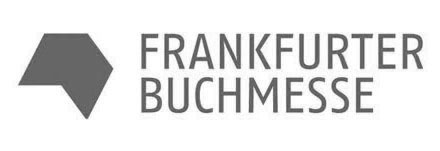A company in such a case will need to evaluate why it cannot achieve economies of scale. In economies of scale, variable costs as a percentage of overall cost per unit decrease as the scale of production ramps up. While variable costs tend to remain flat, the impact of fixed costs on a company’s bottom line can change based on the number of products it produces. The price of a greater amount of goods can be spread over the same amount of a fixed cost. In this way, a company may achieve economies of scale by increasing production and lowering costs.
The cost to package or ship a product will only occur if certain activity is performed. Therefore, the cost of shipping a finished good varies (i.e. is variable) depending on the quantity of units shipped. Though there may be fixed cost components to shipping (i.e. an in-house mail distribution network with a personalized weighing and packaging product line), many of the ancillary costs are variable. Raw materials are the direct goods purchased that are eventually turned into a final product. If the athletic brand doesn’t make the shoes, it won’t incur the cost of leather, synthetic mesh, canvas, or other raw materials.
Variable vs Fixed Costs in Decision-Making
For others that are tied to an hourly job, putting in direct labor hours results in a higher paycheck. Along the manufacturing process, there are specific items that are usually variable costs. For the examples of these variable costs below, consider the manufacturing and distribution processes for a major athletic apparel producer. Note that product costs are costs that go into the product while period costs are costs that are expensed in the period incurred. Let us see one more example to calculate the total variable cost and its dependency on quantity. The manufacturer recently received a special order for 1,000,000 phone cases at a total cost of $400,000.
Activity-Based Costing vs. Absorption Costing: What’s the Difference? – The Motley Fool
Activity-Based Costing vs. Absorption Costing: What’s the Difference?.
Posted: Wed, 18 May 2022 16:55:58 GMT [source]
For managers within a company, it is also useful to prepare an income statement in a different format that separates out the expenses that truly vary directly with revenues. Variable costs are typically more controllable than fixed costs, so it is useful to isolate them so they can be analyzed by management. A variable costing income statement only includes variable manufacturing costs in the finished goods inventory and cost of goods sold amounts on the financial statements. Under variable costing, fixed factory overhead is NOT allocated to the finished goods inventory and is NOT expensed to cost of goods sold when the product is sold. Instead, total fixed factory overhead is treated as a period cost that is deducted from gross profit. Variable costing only includes the product costs that vary with output, which typically include direct material, direct labor, and variable manufacturing overhead.
What are the disadvantages of Full Costing and Variable Costing?
One important point to note about variable costs is that they differ between industries so it’s not at all useful to compare the variable costs of a car manufacturer and an appliance manufacturer. If you’re going to compare the variable costs between two businesses, make sure you choose companies that operate in the same industry. https://turbo-tax.org/when-does-your-child-have-to-file-a-tax-return-2020/ income statements enables management to see and understand the effect that period costs have on profits and facilitates better decision-making. Rather, fixed manufacturing overhead is treated as a period cost, and, like selling and administrative expenses, it is expensed in its entirety each period.
Fewer changes to inventory costs will result in a better historical record of actual production costs. Companies can also break down each department or product line under variable costing, which provides a more thorough analysis of a company’s business operations. Adding new products or expanding current production levels also relies on this consistent information. Variable costing is an essential component of management decision-making exercises. These costs are more relevant and require direct involvement from management, as fixed costs have already been incurred and are irreversible.
What are the advantages of Full Costing and Variable Costing?
On the other hand, variable costs are safer, generate less leverage, and leave the company with smaller upside potential. In this case, suppose Company ABC has a fixed cost of $10,000 per month to rent the machine it uses to produce mugs. If the company does not produce any mugs for the month, it still needs to pay $10,000 to rent the machine. But even if it produces one million mugs, its fixed cost remains the same. Thus a brief explanation of variable costing and the difference between it and full costing. Variable costing is a method of calculating all costs used to make a product.
- The difference between the two costing methods is how the fixed factory overhead costs are treated.
- Under absorption costing, the 2,000 units in ending inventory include the $1.20 per unit share, or $2,400 of fixed cost.
- Variable costing is quite commonly used by management to assist with a variety of decisions.
- Additionally, fixed overhead is $15,000 per year, and fixed sales and administrative expenses are $21,000 per year.
- Absorption costing better upholds the matching principle, which requires expenses to be reported in the same period as the revenue generated by the expenses.
Since fixed costs are static, however, the weight of fixed costs will decline as production scales up. Variable costs are directly related to the cost of production of goods or services, while fixed costs do not vary with the level of production. Variable costs are commonly designated as COGS, whereas fixed costs are not usually included in COGS. Fluctuations in sales and production levels can affect variable costs if factors such as sales commissions are included in per-unit production costs. Meanwhile, fixed costs must still be paid even if production slows down significantly. Estimating future profits is often easier with variable costing when compared to absorption costing.
Disadvantages or Limitations of Variable Costing
A company produces 1000 boxes at an average cost of production of one unit is $20. However, during 2018, the company produced 1,000,000 phone cases, with total manufacturing costs of $598,000 (approximately $0.60 per phone case). An ethical and evenhanded approach to providing clear and informative financial information regarding costing is the goal of the ethical accountant. Ethical business managers understand the benefits of using the appropriate costing systems and methods. The accountant’s entire business organization needs to understand that the costing system is created to provide efficiency in assisting in making business decisions.
- If these costs increase at a rate that exceeds the profits generated from new units produced, it may not make sense to expand.
- The manufacturer recently received a special order for 1,000,000 phone cases at a total price of $400,000.
- For instance, increasing output using the same amount of material can dramatically cut down costs, provided the quality of goods isn’t impacted.
- In accordance with the accounting standards for external financial reporting, the cost of inventory must include all costs used to prepare the inventory for its intended use.
- These costs have amount that continues to change according to the volume of business activities.
The main element of the variable costing formula is direct labor cost, direct material, and variable manufacturing overhead. Fixed manufacturing cost is not included because variable costing makes the cost of goods sold solely available. In variable costing, income statements show gross contribution margin, contribution margin, and total fixed cost which we can use while using the c-v-p analysis. Under the absorption costing method, all costs of production, whether fixed or variable, are considered product costs. This means that absorption costing allocates a portion of fixed manufacturing overhead to each product. The variable cost per unit is $22 (the total of direct material, direct labor, and variable overhead).
Variable Costs
Determining the appropriate costing system and the type of information to be provided to management goes beyond providing just accounting information. The costing system should provide the organization’s management with factual and true financial information regarding the organization’s operations and the performance of the organization. Unethical business managers can game the costing system by unfairly or unscrupulously influencing the outcome of the costing system’s reports.
Absorption costing “absorbs” all of the costs used in manufacturing and includes fixed manufacturing overhead as product costs. Absorption costing is in accordance with GAAP, because the product cost includes fixed overhead. Variable costing considers the variable overhead costs and does not consider fixed overhead as part of a product’s cost.
Найкращий лайк — це 30 гривень))
Фондуючи незалежну редакцію Читомо, ви допомагаєте зростити нове покоління професіоналів видавничої справи і збільшуєте кількість хороших книжок у світі.
Спасибі.

|















Щоб залишити свій коментар, будь ласка, увійдіть через аккаунт Vkontakte чи Facebook